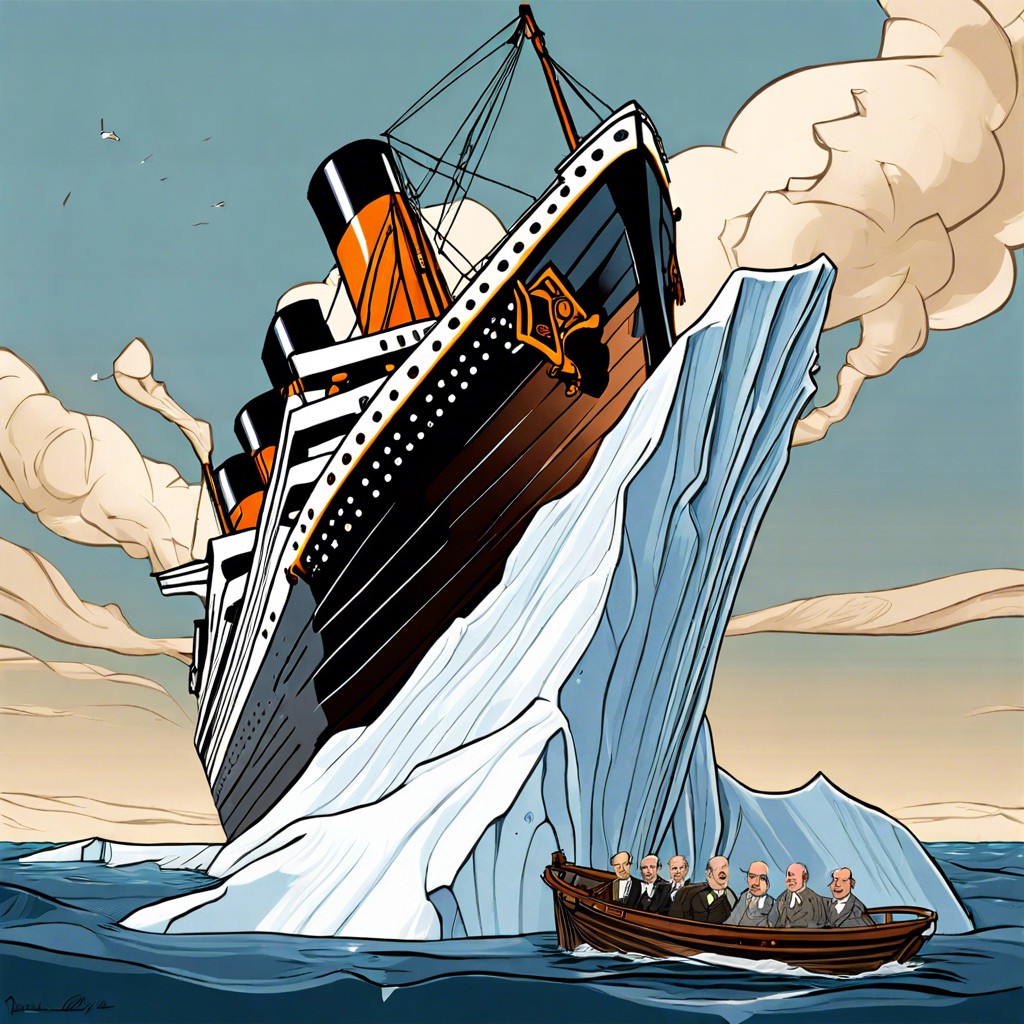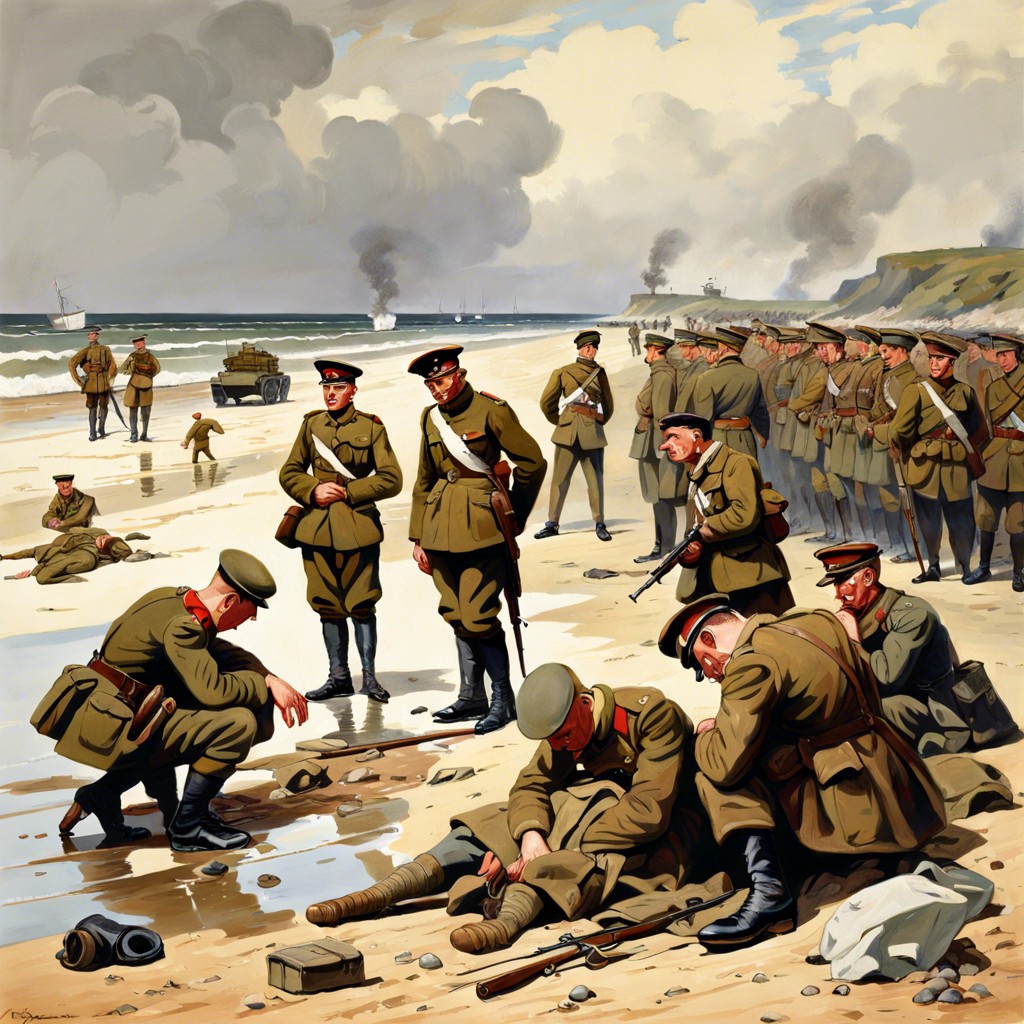Learn what might have happened if the Titanic had hit the iceberg head-on instead of side-swipe in this intriguing take on the historic event.
Imagine, if you will, the majestic Titanic charging head-on into that fateful iceberg, like a valiant knight confronting a menace. Would the ship of dreams have been more of a nightmare than it already was? Dive with us into the icy waters of this alternate history, and we’ll unravel how a direct collision might have altered the very fabric of that tragic night—impact on the ship’s structure, changes in casualty numbers, lifeboat launches, and even the ripples in maritime laws and media frenzy. Ready to embark on this fascinating voyage? Buckle up; it’s about to get titanic-ally interesting.
Key takeaways:
- Centralized damage if hit head-on vs. long gash side-swipe.
- Fewer casualties with bulkhead design containing damage to bow.
- More orderly lifeboat launches and potential for relay service.
- Stricter maritime regulations post-Titanic head-on collision scenario.
- Media frenzy, headlines, and alternate history speculations abound.
Structural Impact Analysis

The Titanic’s design was ahead of its time, but it wasn’t invincible. If it had struck the iceberg head-on, the damage would have been centralized. Instead of a long gash down its starboard side, the impact might have crumpled the bow like a soda can.
Such a scenario would likely compromise a few forward compartments. Importantly, the Titanic could stay afloat despite flooding its first four compartments, but five? Game over.
Then there’s speed. Hitting head-on would absorb a lot of kinetic energy, making the ship lurch. While fewer folks might have felt the need to dress up for a midnight swim, the shock could still cause injuries inside the vessel.
No doubt, engineers would be fascinated with the backbone of the ship — the keel. Would it remain strong or bend like hot spaghetti? It’s a Titanic question.
Potential Changes in Casualty Statistics
Let’s imagine the Titanic hitting the iceberg head-on. Under this scenario, the ship’s bulkhead design might have prevented the rapid flooding that doomed it when the iceberg side-swiped. This could mean fewer casualties.
First, the damage would likely be contained to the bow. Meaning the stern and midsection might stay afloat longer, offering more time for evacuation. Everyone loves a little extra lifeboat drama, right?
Second, more people might have used lifeboats effectively. A head-on collision would probably buy crucial minutes, if not hours, for deploying lifeboats more systematically. Picture a maritime version of organized chaos.
Lastly, the pure psychological impact. A direct hit would mean more immediate awareness of the gravity of the situation. Fewer folks loafing about, thinking “unsinkable” means “untouchable”. More urgency, more survivors. Potentially.
So, a different type of impact, but a different survival story, as well.
Lifeboat Deployment Scenarios
Picture this: a head-on collision. The Titanic’s bow crumples like an accordion, but the hull might stay intact longer. This buys precious extra time, and what does extra time mean? More lifeboats launched!
First, less chaos. Panic is inevitable, but organized panic is manageable. More time equals more crew members directing passengers effectively.
Second, lifeboat space. Many boats left half-full. With more time, they could be filled to capacity. Women, children, and even more third-class passengers find safety.
Third, reusable lifeboats. Having an additional hour or two allows for the possibility of implementing lifeboats in relay-service. Boats can row passengers to nearby ships, then return for more.
Lastly, crew training. The absolute hurly-burly of that night saw hastily executed lifeboat launches. With more time, a couple of crew members could even dust off the manual—imagine that!
Subsequent Maritime Regulations
Given the (literal) titanic shift in events, maritime regulations would likely see some significant twists. Picture this: captains investing heavily in ice-proof nose jobs for their ships, reinforcing those prows!
Ship construction standards would likely mandate even more stringent structural integrity checks. Tougher materials, anyone?
Emergency protocols might stress the importance of quick, efficient evacuation drills. Let’s face it, complacency ain’t cute on the high seas.
The lifeboat-to-passenger ratio could shoot up. More boats, more room for dramatic rescues, less “women and children first” panic.
International agreements might spring up faster than icebergs in the North Atlantic. Collaborative patrolling of iceberg-heavy zones? Yes, please.
In essence, we’d end up with safer, smarter, more resilient ships. And who could argue with that?
Media and Public Reaction
Oh, the headlines! Imagine the media frenzy if the unsinkable ship had merely kissed the iceberg on its nose.
Without the dramatic, side-splitting tear, journalists would’ve salivated over a story of “almost sinking.” Eye-catching, adrenaline-pumping tales of heroism would overshadow the grim reality. Hollywood would need to scrap the tragic love story and focus on a miraculous escape drama instead.
Public reaction? Expect a rollercoaster ride of fear and fascination. While some would marvel at the engineering marvel dodging disaster, others would rant about sheer luck.
And just picture the memes. A head-on collision gives ample fodder for internet humorists. “Hey Titanic, ever thought of steering lessons?”
The speculative fiction market would boom too. Countless what-if books might flood shelves, offering an alternate universe where Jack always gets to paint Rose, no matter how cold that water.




